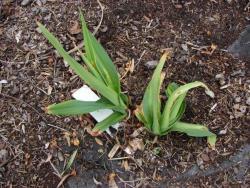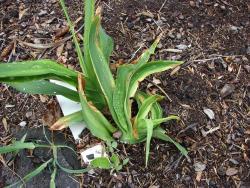beckygardener said:
What could slowly kill a seemingly healthy daylily plant?
@sooby , @admmad , and anyone else ....
Are you hearing about this kind of situation from others or have you experienced it yourselves?
Sorry I'm late

Was out all day yesterday and just catching up.
I would put fans where the main fans die and then produce several smaller fans around where they were down to winter damage. I've had the odd one do that and then be fine in subsequent years. 'Ethiopia' comes to mind - after struggling in its first winter and not making an appearance at all until around June or even July, don't remember for sure, it hasn't done it again and this year is flowering quite well.
Sometimes the same cultivar but from a different source behaves completely differently. I had 'Cherry Cheeks' some years ago and it dwindled and then didn't make it through one winter. I liked it so when I saw it for sale at a local hardware store in a pot I bought it again. Same flower but the plant is much more vigorous and it's now been with me for many years. Things can happen to individual plants that make them behave atypically for that cultivar.
With spring sickness you would first see twisted, gnarly, bent over or just plain stunted fans. They don't necessarily deteriorate to the point of dying and/or producing smaller fans around them and in fact can be quite vigorous plants on the whole Even fans affected by spring sickness can ultimately flower in the same year. I have a photographic sequence I may get around to posting one day.
There are also cultivars that just seem to lack vigour and never really get going.
Plants can be set back by all sorts of things. The first thing to consider with a plant problem is what is normal for that plant. As I mentioned above, even if the cultivar in general is a good performer in one's area there may have been a history with the individual that you happened to get. As an example, when one plants many annuals of all the same cultivar there may be one or two that die or don't do as well as the others. It can be hard to figure out why unless it's something obvious.
I would agree that moving them can sometimes make all the difference. I had 'Night Beacon' really struggle in its original location, it looked like stunting from spring sickness. It didn't flower. Then I had to move it for an unrelated reason and it never looked back. Flowered beautifully every year since.
To find out what is normal for that plant one would have to ask the hybridizer, or the source, or others that grow it in a similar climate.
Becky, can you post a close-up of your yellowing foliage, a leaf and a whole plant? How deep is the mulch and how deep in the soil under it are the daylilies planted?


